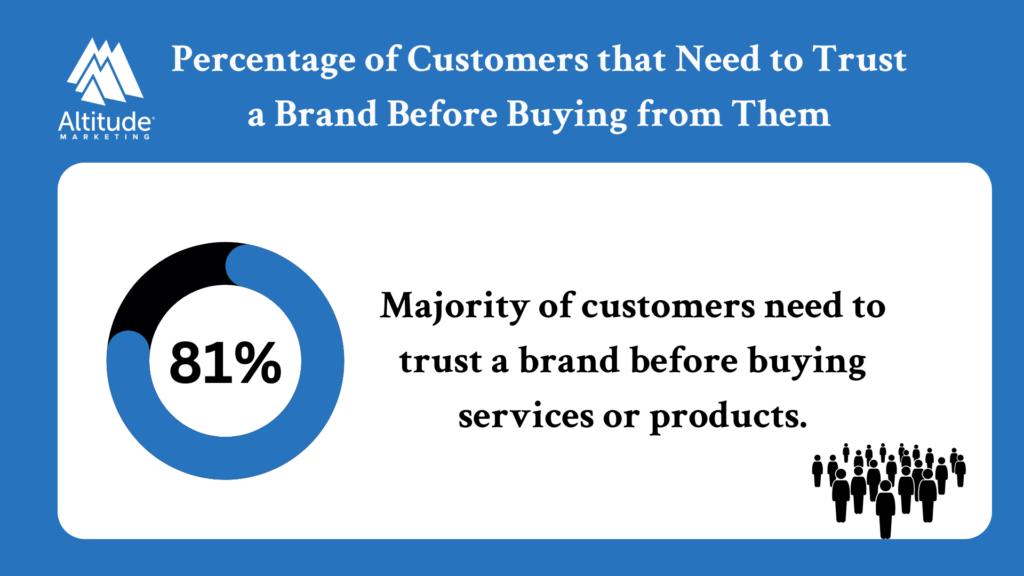In the world of B2B content marketing, the ability to tell compelling stories can be a game-changer. While B2B transactions may involve complex products or services, at their core, they are still driven by human emotions, relationships, and aspirations. Using an effective brand story, B2B marketers can connect with their audience on a deeper level. If you’re looking to bolster your content marketing strategy, these six tips will get you started.

The Art of Storytelling in B2B Content Marketing
Understand Your Audience for Better Brand Storytelling
Effective storytelling begins with a deep understanding of your audience. Take the time to research and identify the pain points, challenges, and aspirations of your target market. What keeps them up at night? What are their goals and aspirations? Using this you can create a successful brand story with a distinct brand personality.
By understanding their needs and motivations, you can tailor your stories to resonate with them on a personal level.
Audience Research Step | Process and Benefits |
Researching Your Audience |
|
Identifying Pain Points and Challenges |
|
Exploring Aspirations and Goals |
|
Understanding Emotional Triggers |
|
Conducting Surveys and Interviews |
|
Creating Audience Personas |
|
Craft Compelling Narratives and Brand Stories
Once you have a clear understanding of your audience, it’s time to craft compelling narratives that speak to their emotions and aspirations. Your stories should be authentic, relatable, and memorable. Whether you’re sharing customer success stories, case studies, or thought leadership content, weave a narrative that illustrates how your product or service can help solve your audience’s problems and achieve their goals. Highlight the value of your brand through storytelling.
Showcase Customer Success Stories for Brand Story Examples
One of the most powerful forms of storytelling in B2B marketing is showcasing customer success stories. Highlighting real-world examples of how your product or service has helped other businesses overcome challenges and achieve success can build credibility and trust with your audience. Interview satisfied customers, collect testimonials, and create case studies that illustrate the tangible benefits of working with your company. Showcasing these insights can help foster a strong origin story for your brand. Everyone loves an underdog of course, and seeing how success is achieved is great brand storytelling.
Leverage Data and Insights for Compelling Brand Story
While storytelling is inherently emotional, it’s essential to back up your narratives with data and insights. Use statistics, industry trends, and research findings to support your claims and provide context for your stories. Data-driven storytelling not only adds credibility but also helps your audience understand the rationale behind your solutions and offerings. This creates a strong brand story that attracts customers to your business. Great brand stories also have factual elements to back it up of course. This promotes brand trust and assures customers of your business and service.
Embrace Visual Brand Storytelling
In today’s digital age, visual content is king. Embrace visual storytelling techniques such as videos, infographics, and interactive content to bring your stories to life and engage your audience. Visual content is more engaging and shareable than text alone, making it a powerful tool for capturing attention and conveying complex information in a digestible format. Remember, visuals are only half the battle. without a compelling story, any amount of brand storytelling will fail.
Fostering Emotional Connections
Ultimately, the goal of storytelling in B2B content marketing is to foster emotional connections with your audience. By tapping into their emotions—whether it’s empathy, inspiration, or excitement—you can create a lasting impression that resonates long after they’ve engaged with your content. Embrace authenticity, vulnerability, and humanity in your human stories to forge meaningful connections with your audience. Telling your brand story through great storytelling is one way to foster human connection. Sharing your brand’s origin story can foster understanding in your audience.
At the end of the day, telling your story is communicating with your audience. By leveraging brand storytelling, emotional connection is inevitable.
Frequently Asked Questions
What is storytelling in B2B content marketing?
Storytelling in B2B content marketing involves using narrative techniques to convey messages, evoke emotions, and engage the audience. It humanizes brands, makes complex concepts more relatable, and builds connections with the target audience.
Why is storytelling important in B2B content marketing?
Storytelling is crucial in B2B content marketing because it helps brands stand out in a crowded marketplace, captures attention, drives engagement, and builds trust with the audience. It enables businesses to communicate their value proposition effectively and differentiate themselves from competitors.
How can I identify compelling stories for my B2B content marketing efforts?
Compelling stories for B2B content marketing can be found in various sources, including customer success stories, case studies, employee experiences, industry trends, and personal anecdotes. Look for narratives that illustrate the impact of your products or services on solving real-world problems or achieving business goals.
Conclusion
In the competitive world of B2B content marketing, storytelling is a powerful tool for capturing attention, driving engagement, and building brand loyalty. By understanding your audience, crafting compelling narratives, showcasing customer success stories, leveraging data and insights, embracing visual storytelling, and fostering emotional connections, you can create impactful content that resonates with your audience and drives results for your business.





